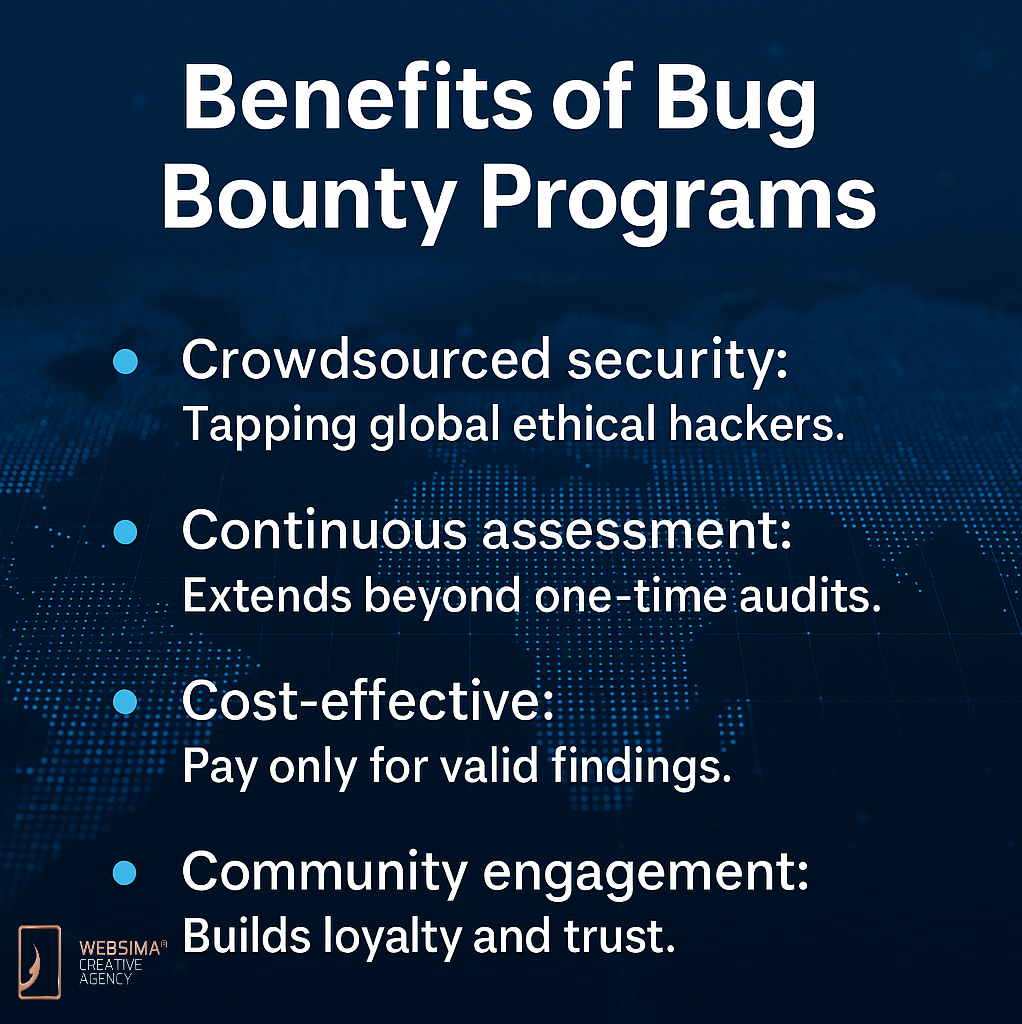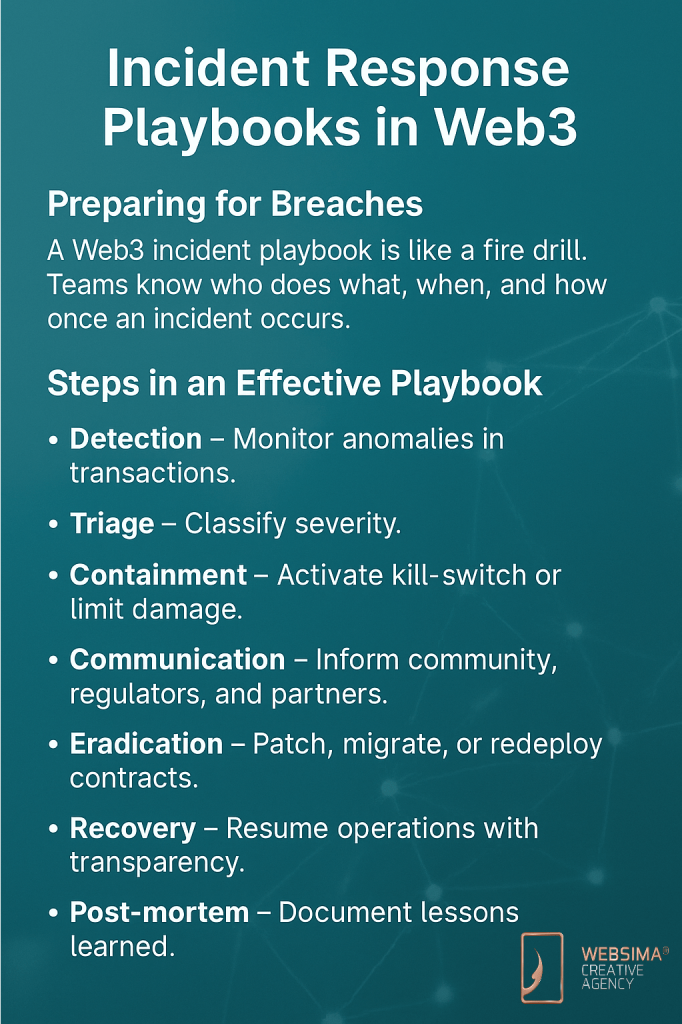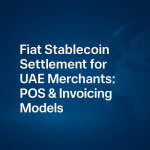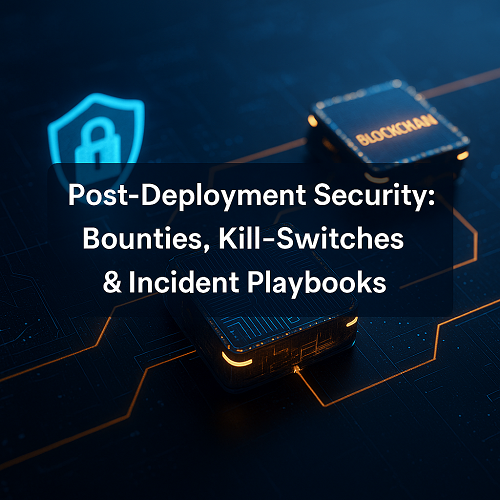Table of Contents
- Introduction
- Why Post-Deployment Security Matters in Web3
- Security Bounties: Incentivizing the Crowd to Find Vulnerabilities
- Benefits of Bug Bounty Programs
- UAE Case Examples
- Kill-Switches and Emergency Pausing Mechanisms
- How They Work
- When to Use Them
- Incident Response Playbooks in Web3
- Preparing for Breaches
- Steps in an Effective Playbook
- Dubai and UAE Context
- Case Study: A Hypothetical Dubai Web3 Startup Responding to an Exploit
- Common Mistakes to Avoid in Post-Deployment Security
- Costs, Tools, and Resource Considerations
- Regulatory and Market Expectations in the UAE
- Risks and Challenges
- Outlook for 2025–2030
- Final Thoughts
- FAQs
- Work with Websima
Introduction
Deploying a Web3 application in Dubai or across the UAE is only the beginning. Post-deployment security practices — from bounty programs to kill-switches and incident response playbooks — ensure that decentralized apps can handle the inevitable: cyberattacks, exploits, and human error.
In the web3 incident response UAE landscape, regulators like the Virtual Assets Regulatory Authority (VARA) and Abu Dhabi Global Market (ADGM) expect startups to maintain operational resilience. With millions in total value locked (TVL) on smart contracts, overlooking post-deployment security isn’t an option.
This article explores practical strategies for startups to safeguard their ecosystems after launch.
Why Post-Deployment Security Matters in Web3
Traditional apps can be patched centrally, but Web3 apps are deployed to immutable blockchains. Bugs in smart contracts can freeze funds, drain liquidity pools, or undermine trust.
- High stakes: Billions of dollars have been lost to hacks.
- Regulatory risk: Non-compliance with UAE guidelines could result in penalties.
- Reputation impact: Trust is fragile in decentralized finance.
Thus, proactive post-deployment security is crucial for Web3 founders in the UAE.
Security Bounties: Incentivizing the Crowd to Find Vulnerabilities
Benefits of Bug Bounty Programs

- Crowdsourced security: Tapping global ethical hackers.
- Continuous assessment: Extends beyond one-time audits.
- Cost-effective: Pay only for valid findings.
- Community engagement: Builds loyalty and trust.
UAE Case Examples
Dubai startups are beginning to align with global practices:
- A DeFi protocol in DIFC ran a bounty program with rewards up to USD 50,000 for critical bugs.
- A gaming NFT startup in Dubai Silicon Oasis offered tiered bounties for smart contract issues.
As AuditOne explains, the most successful bounty programs carefully define scope, incentives, and community engagement. These measures complement audits, offering real-world defense-in-depth.
Further reading: Getting Started with Web3 Bug Bounties.
Kill-Switches and Emergency Pausing Mechanisms
How They Work
A kill-switch (often a smart contract pause function) allows project teams to temporarily halt operations in emergencies, preventing further losses.
- Triggered by governance keys or multi-signature wallets.
- Disables deposits, swaps, or transfers until issues are resolved.
When to Use Them
- Exploits actively draining funds.
- Oracle manipulation detected.
- Market volatility creates cascading failures.
Cryptopolitan notes that kill-switches are controversial, but they remain essential in early-stage projects where safety outweighs full decentralization. Meanwhile, Cloudflare’s Web3 docs provide technical guidance on implementation.
Incident Response Playbooks in Web3

Preparing for Breaches
A Web3 incident playbook is like a fire drill. Teams know who does what, when, and how once an incident occurs.
Steps in an Effective Playbook
- Detection — Monitor anomalies in transactions.
- Triage — Classify severity.
- Containment — Activate kill-switch or limit damage.
- Communication — Inform community, regulators, and partners.
- Eradication — Patch, migrate, or redeploy contracts.
- Recovery — Resume operations with transparency.
- Post-mortem — Document lessons learned.
Dubai and UAE Context
In the UAE, incident response isn’t just best practice — its regulatory hygiene. Halborn’s guide stresses that structured plans help reduce chaos during a breach. Similarly, Olympix.ai found that 90% of exploited contracts had audits, but lacked post-deployment monitoring — a gap that incident playbooks fill.
Case Study: A Hypothetical Dubai Web3 Startup Responding to an Exploit
Imagine a decentralized lending app in DIFC facing a flash-loan exploit:
- Monitoring detects abnormal withdrawals.
- Multi-sig team activates the kill-switch, pausing borrowing functions.
- Community announcement issued within 15 minutes.
- Incident response playbook guides forensic investigation.
- Collaboration with blockchain analytics firms traces stolen assets.
- Root cause patched, and an upgraded contract deployed.
- Detailed post-mortem report shared with VARA and community.
This structured response reduces damage, builds trust, and ensures startup compliance under UAE law.
Common Mistakes to Avoid in Post-Deployment Security
- Relying only on pre-launch audits without bounties.
- Having a kill-switch controlled by a single keyholder.
- Failing to practice incident response drills.
- Withholding information from users and regulators.
- Not budgeting for ongoing security expenses.
Costs, Tools, and Resource Considerations
- Bounty programs: USD 10,000–100,000 annually depending on scope.
- Kill-switch mechanisms: Minimal development cost but require careful governance.
- Playbook implementation: Staff training, monitoring software, and forensic partners.
Tools like Tenderly and Chainalysis KYT can support real-time detection, while external firms such as Halborn specialize in UAE-friendly incident playbook development.
Regulatory and Market Expectations in the UAE
- VARA requires risk management systems for licensed Web3 entities.
- ADGM and DIFC apply financial-services-grade standards to Web3 platforms.
- Central Bank of the UAE guidance highlights operational resilience for payment token services.
For Web3 startups and ventures in Dubai, demonstrating a web3 incident response UAE framework improves licensing approval chances and investor confidence.
Risks and Challenges
- Over-centralization: Kill-switches risk undermining decentralization ethos.
- Resource limitations: Startups may lack budget for continuous bounties.
- Coordination gaps: Incident playbooks require cross-team commitment.
- Legal ambiguity: Liability for losses can be complex in multi-jurisdictional settings.
Outlook for 2025–2030
The next five years will see:
- Wider adoption of bounty marketplaces as industry standard.
- Automated kill-switches triggered by anomaly detection.
- Regulator-approved playbooks integrated into VARA compliance.
- Cross-border collaboration between UAE startups and international Web3 security firms.
Dubai’s ambition to be a global Web3 capital makes these measures essential for sustainable growth.
Final Thoughts
In the world of Web3, deployment isn’t the end — it’s the beginning of constant defense. Security bounties, kill-switches, and incident playbooks form a three-pillar framework for resilient operations.
For UAE startups, integrating these practices aligns with regulatory expectations and builds long-term trust with investors and users. The strongest platforms will be those that plan not just for launch, but for the inevitable incidents to come.
FAQs
What is a kill-switch in Web3?
It’s a pause mechanism in smart contracts to temporarily stop functions during emergencies.
Why are bounties important?
They incentivize global security researchers to find vulnerabilities before attackers do.
Do UAE regulators require incident playbooks?
While not mandated, VARA and ADGM emphasize operational resilience, making them a best practice.
What is unique about web3 incident response UAE practices?
They integrate both international best practices and local compliance requirements under VARA and DIFC.
Can kill-switches undermine decentralization?
Yes, but governance frameworks (multi-sig, DAO votes) can balance safety with decentralization.
Work with Websima
At Websima, we help Dubai startups build resilient Web3 infrastructures. From smart contract audits to custom incident response playbooks, our team ensures compliance, transparency, and trust.
Whether you’re launching a DeFi platform, NFT marketplace, or tokenized real estate project, we align your technology with UAE regulations and global best practices.
Ready to strengthen your web3 incident response UAE strategy? Contact Websima today and safeguard your innovation.





